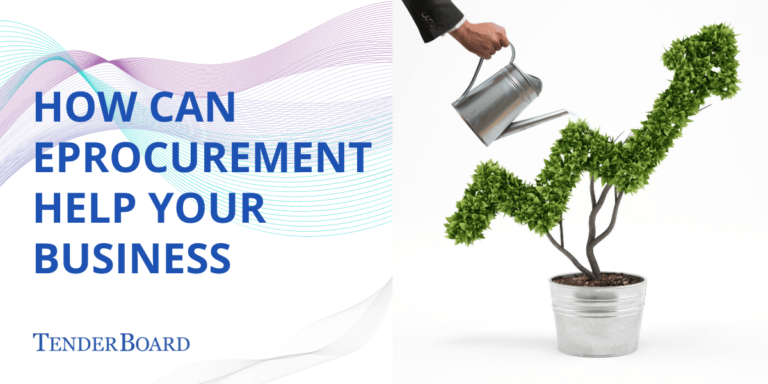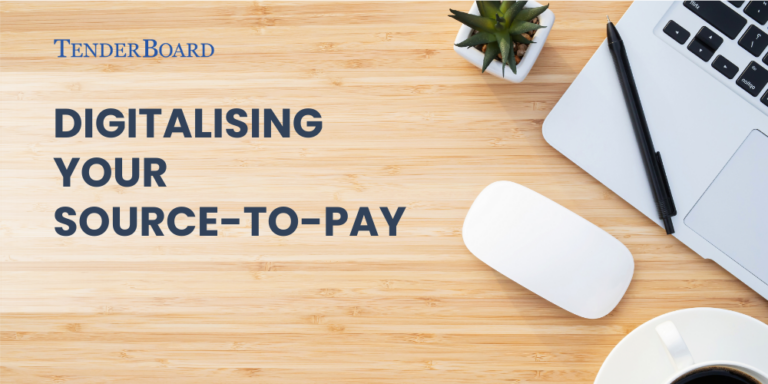https://www.tenderboard.biz/blog/digital-procurement-how-digital-transformation-is-changing-procurement/
Digital Procurement: How Digital Transformation is Changing Procurement
Digital Procurement: How Digital Transformation is Changing Procurement
Also known as the third industrial revolution, the digital revolution started in the 1980s.
From the creation of CRM tools to replace manual data entry to the development of software solutions that automate lead generation, the digital transformation of industries has sped up exponentially and shows no signs of slowing down. In fact, this process is only being accelerated by the COVID-19 pandemic
Just as how various industries around the world have been digitalised, so too the procurement industry.
In this article, we will be examining:
- The rise of digital procurement
- Some examples of the technological capabilities of digital procurement
- Benefits of digital procurement
- How digital transformation is changing the procurement world
Rise of digital transformation of industries
Digital procurement is the use of digital solutions to improve the procurement process. We have already been seeing the effects of the application of such technologies to procurement including strategic sourcing, transactional procurement, and supplier relationship management.
Digital procurement solutions are driving the improvement of processes by collecting large amounts of unprocessed data. Procurement managers can then clean up the data points and use them to make them well-informed and data-driven solutions.
Here are some examples of the types of technologies and capabilities enabled by the digital transformation of procurement.
Examples of digital technologies and capabilities
1. Procurement analytics
Procurement analytics is the process in which procurement-related data is collected and analysed in order to help businesses make informed decisions. The data is also used to predict the most likely scenarios for things like cost/price fluctuations, demand, and supplier risk.
2. Intelligent content extraction
This capability uses Optical Character Recognition (OCR) and learning algorithms to read unstructured data. Some of these include PDF files of tender contracts and payment documents. This can help speed up a lot of the steps in the procurement process that involves transactions.
3. Data visualization
Raw and unprocessed data collected by digital procurement tools and converted into visual formats such as graphs and charts. This makes it easier for businesses to interpret the data and make predictions. eProcurement software like Tenderboard are capable of doing this for their users.
4. Cyber tracking
This refers to the real-time tracking of online or physical activities. These include the proactive monitoring of supplier behaviour and performance. The data collected can be used to provide valuable insights and deliver trends and predictions on supplier or supply chain risks.
Benefits of the digital transformation
1. Saves time
As with all other tech solutions, digital procurement solutions help businesses save a lot of time that would otherwise have been wasted on menial and unimportant manual tasks. For example, leveraging an eProcurement system to manage your contracting process helps to shorten your contract management cycle time, and enhance your structured spending.
Businesses can then spend their time more strategically on other more important aspects of the business and improve overall sales productivity.
2. Saves cost
Naturally, businesses save more money as well.
When more of your processes are automated or facilitated by technology, their employees will spend less time on the work that needs to be done and this can help drive down manpower costs.
Furthermore, with procurement analytics, businesses are able to identify the supplier that provides them with the most value per dollar.
3. More accurate predictions
With procurement analytics, the way businesses make decisions have transformed as well.
Procurement analytics allows businesses to measure several different types of key metrics to help businesses improve the accuracy of their predictions and decision-making process. Some of these include spend under management, purchase order accuracy, and compliance rate.
How digital transformation is changing procurement
1. Digital-first strategies will remain the norm for a long time
Since the early days of the digital revolution, companies have already seen the positive effects technology can have on businesses. With the global pandemic cementing this fact, more and more organisations in the procurement world will scramble to digitalise their business to keep themselves ready to adapt to any potential change in the world.
2. An increasing adoption of the cloud
According to supply chain consultancy GEP, more and more high-performing organisations are leveraging cloud-native source-to-pay (S2P) applications that can operate independently to store data and enable end-to-end process flows. These range from category strategy to invoicing.
3. Increased collaboration between procurement and data science departments
GEP also predicted an increase in the collaboration between data science and procurement teams.
Data teams are needed to help apply machine learning and AI to organise unprocessed data into recognisable patterns in spend behaviour to forecast future budget trends. This means that procurement teams will gain access to more actionable data sets.
For instance, by incorporating AI with cluster analysis, buyers can detect patterns in invoices, purchase orders, or master data. These patterns can then be “clustered”, based on information contained in the text.
This helps improve the buyers’ decision-making process as they can better allocate future spend across the supply base to mitigate future risks.
Conclusion
Technology is ever-changing and players in the procurement world need to start adopting software solutions to improve the efficiency and productivity of their processes.
Only with reliable data can businesses make more accurate decisions and gain a competitive edge over their competitors.
For more information on how Tenderboard can help improve your procurement processes, contact us here today.










Comments
Post a Comment